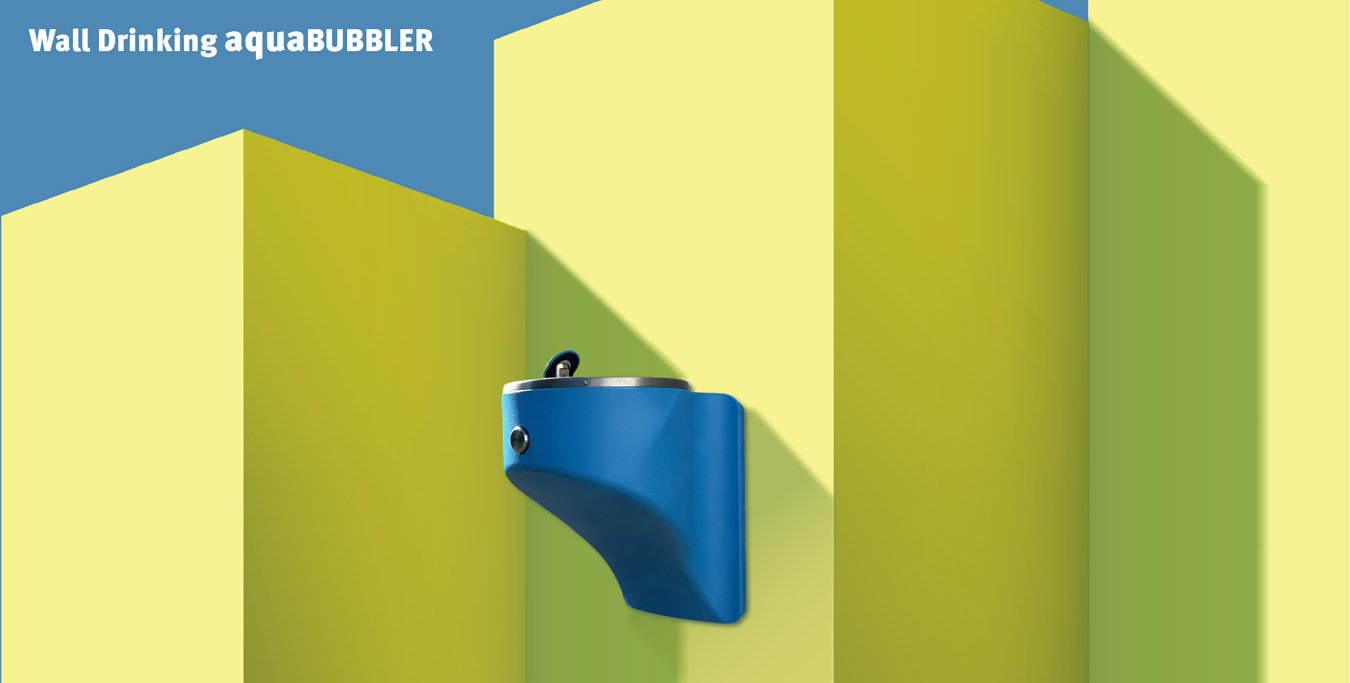The most important function of any drinking fountain is to entice people to use it and to deliver an enjoyable, rewarding user experience.
Current research reveals that water drinking, rather than being a simple physical act, is a complex behaviour that relies on certain conditions and cues being present. A drinking fountain must be visible and recognisable from a distance and aesthetically appealing in order for people to decide to use it. These attributes are embodied by all other aquaBUBBLER products and so it was simply a matter of applying them to the WDa.
We wanted it to be possible for the WDa to be mounted on any type of wall; this goal was to guide our design process. Maximising the surface area of the back of the unit and engineering a bracket that would allow extremely secure wall attachment allowed us to achieve this objective.
Balancing space efficiency with visibility was another important consideration. The WDa was designed to be low profile so as to not create an obstacle in walkways, yet protrude from the wall sufficiently to be easily seen from a distance. Comfortably accommodating a wheelchair underneath, with both tap and controls within easy reach, was a non-negotiable criterion.
The end user, the client, the installer, and the maintenance person have different reasons to interact with drinking fountains. There are therefore a wide range of different needs and expectations of the product.
Based on experience with our existing models, we knew that the client’s expectations would include: functionality, reliability, serviceability, and attractive appearance. Many clients stipulate inclusivity as a criterion for purchase and are only satisfied when the item proves popular with end user. The client requires installation to be easy and straightforward for the plumber with minimum need for maintenance.








